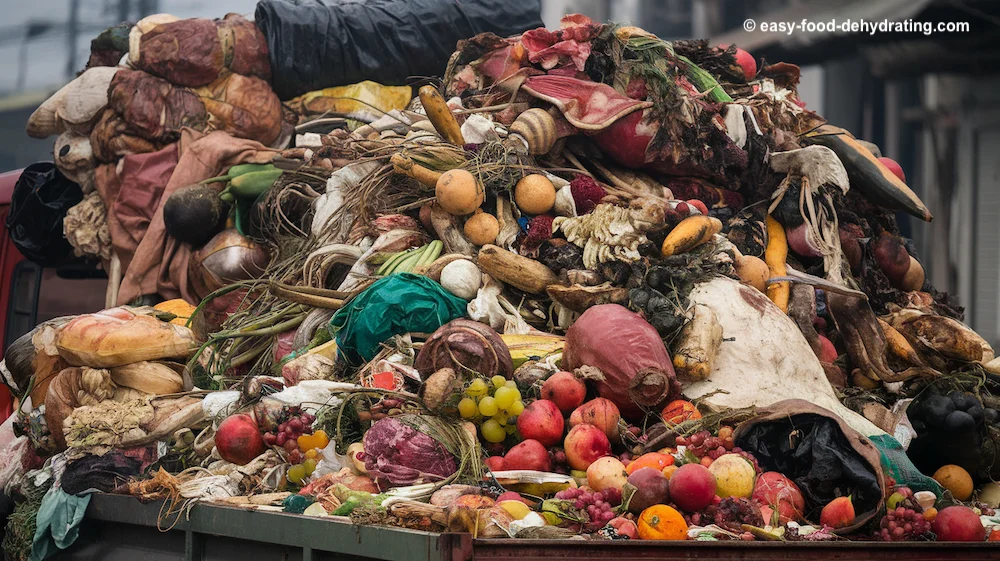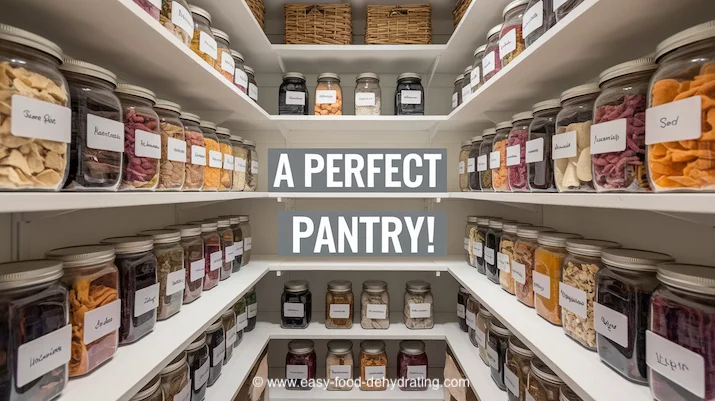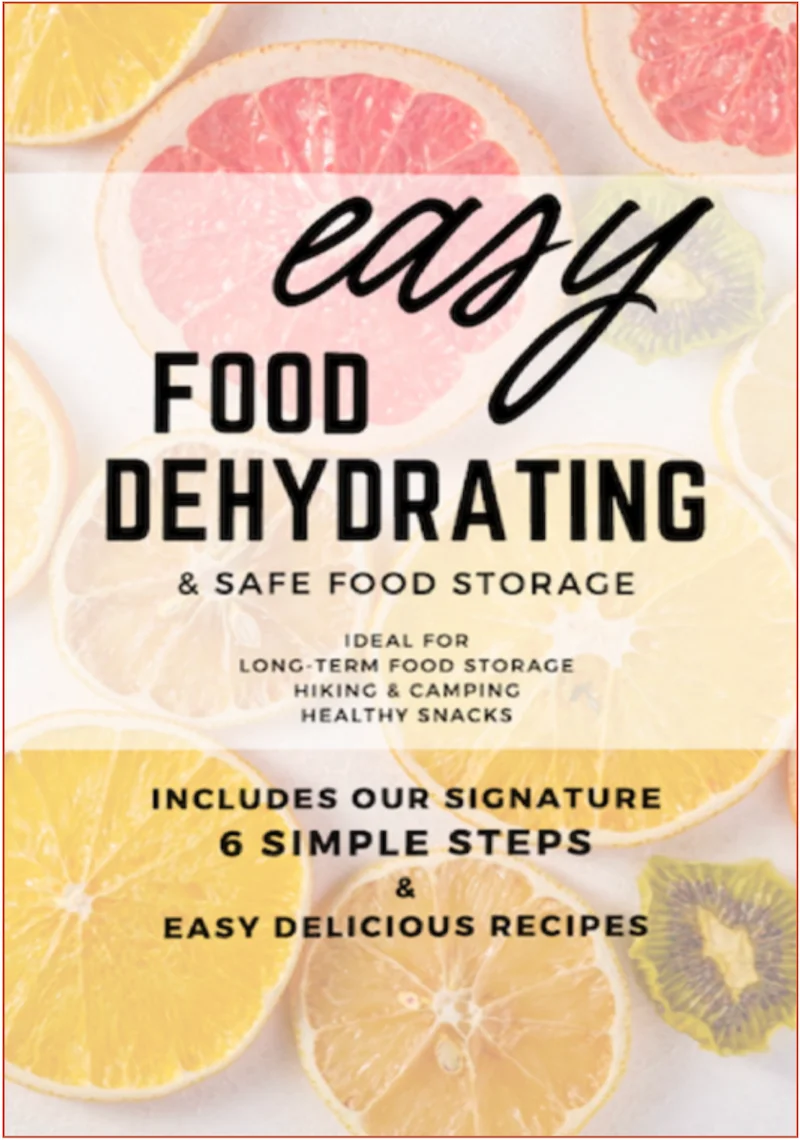What We Mean by “Dehydrate”
Here at Easy Food Dehydrating, “dehydrate” always means using an electric food dehydrator — the easy, reliable way to dry food at home.
- Home
- Articles On How To Dehydrate Food Safely
- 11 Surprising Ways Dehydrating Food Contributes to a Sustainable Lifestyle
11 Surprising Ways Dehydrating Food
Contributes to a Sustainable Lifestyle

Did you know that dehydrating food is one of the simplest ways to live more sustainably? By removing moisture, you can save food from spoiling, cut down on energy-hungry storage methods, and create nutritious meals that last for months. It’s an eco-friendly habit that’s easier to start than you might think.
✅ Quick Answer: How does dehydrating food support a sustainable lifestyle?
Dehydrating food supports a sustainable lifestyle by reducing food waste, cutting energy use compared to freezing or canning, lowering carbon footprint, and extending shelf life—so you save money, preserve seasonal produce, and enjoy eco-friendly meals year-round.
Dehydrating fits perfectly into a sustainable lifestyle because it reduces waste, saves pantry space, and even makes emergency preparedness effortless—all while giving you tasty, creative meal options.

1. Cut Food Waste by Turning Leftovers Into Shelf-Stable Meals
Let's face it, we've all thrown away food we meant to eat – but forgot about. I started Easy Food Dehydrating not long after my discovery of rotting potatoes in my refrigerator's bottom drawer. And you know what? There's absolutely nothing worse than the smell of rotten potatoes!
So it was time to stop wasting food. I chose food dehydrating. Why? Dehydrating extends the shelf life of your food, significantly reducing waste. It's also a delicious, easy solution: turn that overripe produce into snacks like fruit leathers!
Think of dehydrated apple chips from that browning apple, or transforming wilting spinach into a dried, nutritious powder. You not only save money but make a positive environmental impact by not dumping stuff all the time.
2. Save Energy: Why Dehydrating Beats Freezing and Canning
I thought about canning, but canning requires heat and can be energy-intensive. Plus I don't trust myself around anything that's pressurized—or boiling—for any length of time.
Freezing? I don't have space for a chest freezer, plus there's only the two of us here at home. And it's a constant energy drain to keep things cold.
Dehydrating uses far less electricity compared to freezing or canning foods. Plus, with solar dehydrators, it becomes completely energy-neutral!
Imagine using the sun to dry out your favorite herbs and veggies—a natural, no-cost energy source at your fingertips. Nostalgic yet modern, right?
3. Small Pantry? Dehydrated Food Saves Tons of Space

The struggle of a cluttered pantry is real! Dehydrated foods take up significantly less space, essentially becoming your pantry's best friend. Fruits, veggies, and meats shrink during dehydration, allowing you to store more dried foods without the hassle of bulky boxes and bags.
With dehydrated food, I easily stack'n'pack jars and bins in even the smallest of spaces.
4. Transform Everyday Meals with Creative Dehydrated Ingredients
Ever considered bringing gourmet flair into your kitchen without the gourmet price? Dehydrated foods can elevate your cooking, providing complex flavors and textures. They're our secret ingredients that turn ordinary dishes into extraordinary creations.
Picture adding crunchy onions to a salad or topping yogurt with chewy, sweet strawberries. This isn't just sustainability; it's creativity unleashed in your culinary endeavors.
5. Stay Prepared: Build an Emergency Stockpile with Dehydrated Food
Admit it, we've all thought about being better prepared for emergencies. With the unpredictability of weather and power outages, having a stock of dehydrated food ensures you’re always ready. Dehydrated foods have long shelf lives and require no refrigeration.
Easy to store and access during unexpected emergencies, they’re the unsung heroes during a crisis, empowering you with the peace of mind that comes with preparedness.
6. Perfect for Travel: Lightweight, Nutritious Snacks Anytime
For all the adventurers out there, dehydrated food is a lightweight, nutrient-rich companion when you're outdoors enjoying nature.
Dried foods provide a dense source of nutrition without the back-breaking load. Try drying green beans like my friend above did! Backpacking through national parks becomes more pleasant when your meals don't weigh you down.
Hit the trails with high-protein jerky or vitamin-packed fruit leathers.
7. Slash Your Carbon Footprint with Smart Food Preservation
For those who are bothered about their carbon footprint... transporting fresh produce contributes to significant carbon emissions.
By dehydrating, you're opting for a method that reduces food weight and increases its lifespan, thereby lightening the fuel load needed for transportation, that is, assuming you're toting dried food en masse.
8. Support Local Farmers by Buying in Bulk and Dehydrating
This is my fave: Supporting local farmers! This is a surefire way to boost the local economy. Dehydrating allows you to buy in bulk during peak seasons directly from farmers, preserving their produce for use throughout the year.
Visit those roadside stands and buy their fruits and vegetables – yes, even the misshapen ones! They're great for blending and making into fruit rolls (aka fruit leathers).
It's like putting your money where your mouth is – literally! Plus, you'll enjoy fresher, more authentic flavors from your local growers.
9. Build Community by Sharing and Swapping Dehydrated Foods
Have more dehydrated strawberries than you can eat? Share them! Dehydrating encourages community sharing by allowing you to swap and share surplus stocks with neighbors. It’s an avenue for building connections and fostering sustainability within your community.
So how about creating a dehydrated food swap event in your community, where taste adventures and friendships grow?
10. Enjoy Seasonal Flavors Year-Round Thanks to Dehydrating
Seasonality of produce can be frustrating when your craving hits off-season, or your favorite cookie recipe calls for an out-of-season fruit.
Dehydrated food brings the harvest indoors and as my tag line says, "Whatever the reason or season," providing year-round access to your favorite fruits and vegetables.
Relive the taste of summer berries in the winter, or fall apples in spring. The flavors you love are never more than a pantry jar away!
11. Keep Traditions Alive Through Generations with Dehydrating
Dehydrating is an age-old tradition, used by countless cultures. It's not just about food; it's about preserving histories, traditions, and practices that bring people together.
This method attracts new generations eager to learn how to reduce food waste.
Embrace it, and you're acting as both a guardian of nostalgia and a pioneer of progress, cleverly blending old-world wisdom with modern sustainability needs.
Your Dehydrating & Sustainability Questions, Answered
Is dehydrating food really more sustainable than freezing?
Is dehydrating food really more sustainable than freezing?
Yes. Freezing requires continuous electricity, while dehydrated food needs no power after drying. This lowers energy consumption and carbon footprint over time.
What foods are best for sustainable dehydrating?
What foods are best for sustainable dehydrating?
Fruits, vegetables, and herbs are top picks. Buying in bulk from local farmers and dehydrating seasonal produce ensures nothing goes to waste and supports your community.
How long does dehydrated food last in storage?
How long does dehydrated food last in storage?
Properly stored in airtight containers, dehydrated foods can last from 6 months to over a year. Using oxygen absorbers and Mylar bags can extend shelf life even further.
Dehydrating: A Simple Step Toward a Greener, Healthier Future
Dehydrating food is more than just a kitchen trick—it’s a meaningful step toward a greener, more resilient way of living. You’ll save money, enjoy creative cooking, and cut waste, all while making a positive impact on the planet.
Ready to taste the difference? Grab your free 5 Dried Food Recipes You'll Actually Love PDF (below) and start with simple favorites like carrot soup, minestrone, split pea, spicy beef jerky, and banana cinnamon rolls.
Get 5 Dried Food Recipes You'll Actually Love
Here's where you can get your copy of our all new
5 Dried Food Recipes (That Actually Taste Great)
They're my all-time favorite easy dried food meals!
Get it here right now.
For Free!
Before You Go...
If you enjoyed this page, tap the ❤️ in the lower right-hand corner.
It saves this page to your Grow bookmarks so you can find it again later.
You’ll also see quick share buttons to copy the link, post to Facebook,
or save it straight to Pinterest.














